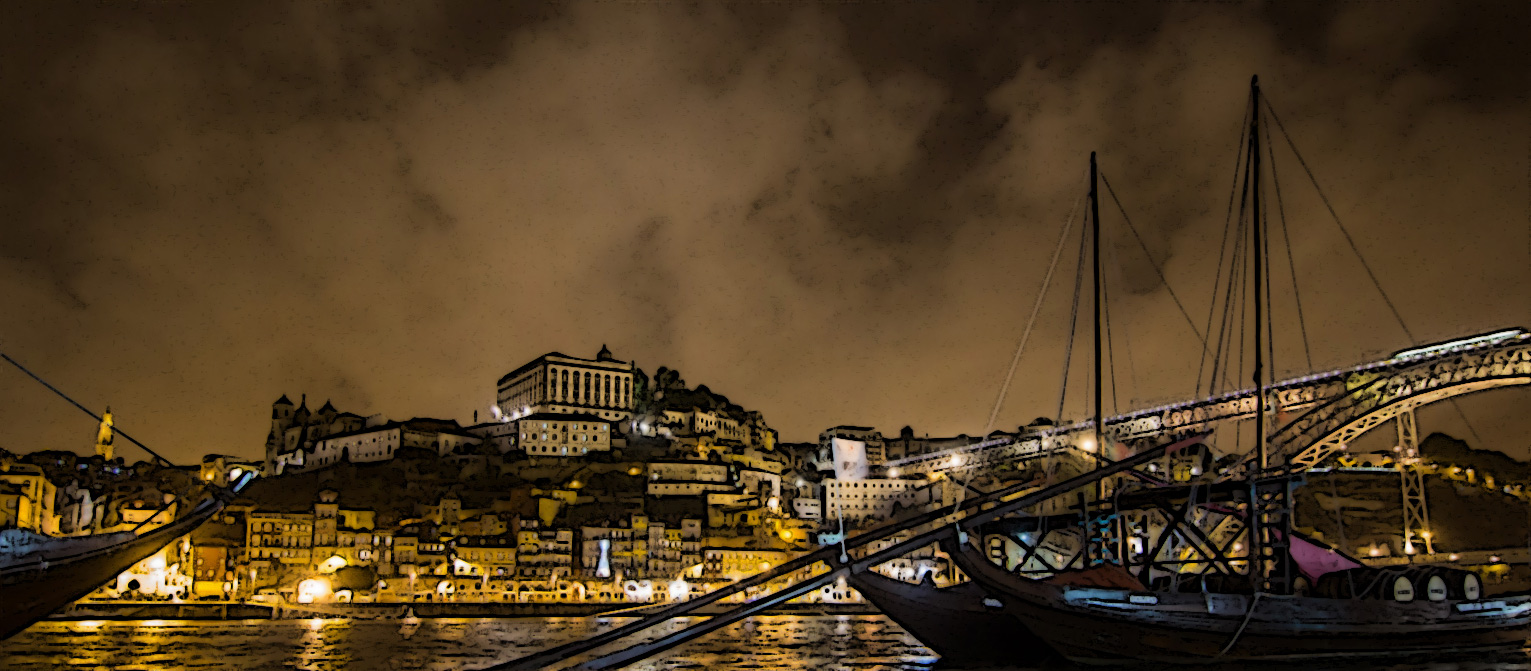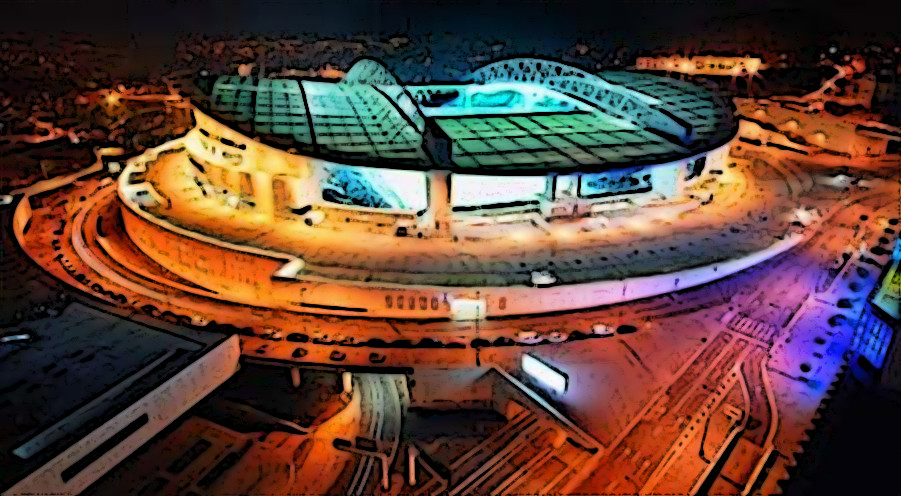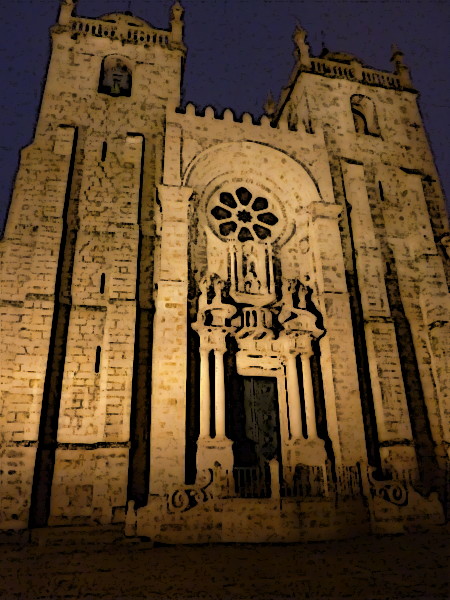Porto: Difference between revisions
| (11 intermediate revisions by the same user not shown) | |||
| Line 1: | Line 1: | ||
;[[Portugal]] | ;[[Portugal]] | ||
== ''' | == '''Introduction''' == | ||
Porto, also known as Oporto in English, is the second largest city in Portugal after Lisbon and one of the major urban areas of the Iberian peninsula. The urban area of Porto, which extends beyond the administrative limits of the city, has a population of 1.4 million (2011) in an area of 389 km2 (150 sq mi), making it the second-largest urban area in Portugal. Porto Metropolitan Area, on the other hand, includes an estimated 1.8 million people. It is recognized as a Gamma-level global city by the Globalization and World Cities (GaWC) Study Group, the only Portuguese city besides Lisbon to be recognized as a global city. | |||
Located along the Douro river estuary in Northern Portugal, Porto is one of the oldest European centers, and its historical core was proclaimed a World Heritage Site by UNESCO in 1996. The western part of its urban area extends to the coastline of the Atlantic Ocean. Its settlement dates back many centuries, when it was an outpost of the Roman Empire. Its combined Celtic-Latin name, Portus Cale, has been referred to as the origin of the name "Portugal", based on transliteration and oral evolution from Latin. In Portuguese, the name of the city is spelled with a definite article ("o Porto"; English: the port). Consequently, its English name evolved from a misinterpretation of the oral pronunciation and referred to as Oporto in modern literature and by many speakers. | |||
One of Portugal's internationally famous exports, port wine, is named for Porto, since the metropolitan area, and in particular the caves of ''Vila Nova de Gaia'', were responsible for the packaging, transport and export of the fortified wine. In 2014, Porto was elected The Best European Destination by the Best European Destinations Agency. | |||
== '''Appearance''' == | == '''Appearance''' == | ||
[[File:Porto city at night.jpg]] | |||
<br> | |||
<br> | |||
== '''City Device''' == | == '''City Device''' == | ||
| Line 9: | Line 17: | ||
== '''Climate''' == | == '''Climate''' == | ||
Porto features mainly a Mediterranean climate. As a result, its climate shares many characteristics with the coastal south: warm, dry summers and mild, rainy winters. Unlike the south, however, cool and rainy North Atlantic interludes interrupt the dry season and the season's average length is shorter, with three dry months. The annual precipitation is high and Porto is one of the wettest cities of Europe. However, long periods with mild temperatures and sunny days are frequent even during the rainiest months. | |||
Summers are typically sunny with average temperatures between 16 °C (61 °F) and 27 °C (81 °F) but can rise to as high as 38 °C (100 °F) during occasional heat waves. During such heat waves the humidity remains quite low but nearby forest fires can add haze and ash to the air making breathing somewhat uncomfortable, especially at night. Nearby beaches are often windy and usually cooler than the urban areas. In contrast, occasional summer rainy periods may last a few days and are characterised by showers and cool temperatures of around 20 °C (68 °F) in the afternoon. However, summer average temperatures are a few degrees cooler than those expected in more continentally mediterranean influenced metropolises on the same latitude such as Barcelona and Rome. | |||
Winter temperatures typically range between 5 °C (41 °F) during morning and 15 °C (59 °F) in the afternoon but rarely drop below 0 °C (32 °F) at night. The weather is often rainy for long stretches although prolonged sunny periods do occur. | |||
== '''Demonym''' == | == '''Demonym''' == | ||
| Line 17: | Line 28: | ||
== '''Geography''' == | == '''Geography''' == | ||
In 1996, UNESCO recognised its historic centre as a World Heritage Site. Among the architectural highlights of the city, Porto Cathedral is the oldest surviving structure, together with the small romanesque Church of Cedofeita, the gothic Igreja de São Francisco (Church of Saint Francis), the remnants of the city walls and a few 15th-century houses. The baroque style is well represented in the city in the elaborate gilt work interior decoration of the churches of St. Francis and St. Claire (Santa Clara), the churches of Mercy (Misericórida) and of the Clerics (Igreja dos Clérigos), the Episcopal Palace of Porto, and others. The neoclassicism and romanticism of the 19th and 20th centuries also added interesting monuments to the landscape of the city, like the magnificent Stock Exchange Palace (Palácio da Bolsa), the Hospital of Saint Anthony, the Municipality, the buildings in the Liberdade Square and the Avenida dos Aliados, the tile-adorned São Bento Train Station and the gardens of the Crystal Palace (Palácio de Cristal). A guided visit to the Palácio da Bolsa, and in particular the Arab Room, is a major tourist attraction. | |||
Many of the city's oldest houses are at risk of collapsing. The population in Porto municipality dropped by nearly 100,000 since the 1980s, but the number of permanent residents in the outskirts and satellite towns has grown strongly. | |||
=== Districts === | |||
Administratively, the municipality is divided into 7 civil parishes (freguesias). | |||
* -- Aldoar, Foz do Douro e Nevogilde | |||
* -- Bonfim | |||
* -- Campanhã | |||
* -- Cedofeita, Santo Ildefonso, Sé, Miragaia, São Nicolau e Vitória | |||
* -- Lordelo do Ouro e Massarelos | |||
* -- Paranhos | |||
* -- Ramalde | |||
== '''History''' == | == '''History''' == | ||
== '''Population''' == | == '''Population''' == | ||
* -- City (237, | * -- City (237,591) - 2011 census | ||
* -- Urban (1, | * -- Urban (1,474,000) - 2011 census | ||
* -- Metro Area (1, | * -- Metro Area (1,762,524) - 2011 census | ||
== '''Arenas''' == | == '''Arenas''' == | ||
[[File:Estádio do Dragão night.jpg]] | |||
<br> | |||
<br> | |||
== '''Attractions''' == | == '''Attractions''' == | ||
| Line 46: | Line 74: | ||
== '''Holy Ground''' == | == '''Holy Ground''' == | ||
[[File:Porto Cathedral facade by night.jpg]] | |||
<br> | |||
<br> | |||
== '''Hospitals''' == | == '''Hospitals''' == | ||
Latest revision as of 20:27, 3 June 2016
Introduction
Porto, also known as Oporto in English, is the second largest city in Portugal after Lisbon and one of the major urban areas of the Iberian peninsula. The urban area of Porto, which extends beyond the administrative limits of the city, has a population of 1.4 million (2011) in an area of 389 km2 (150 sq mi), making it the second-largest urban area in Portugal. Porto Metropolitan Area, on the other hand, includes an estimated 1.8 million people. It is recognized as a Gamma-level global city by the Globalization and World Cities (GaWC) Study Group, the only Portuguese city besides Lisbon to be recognized as a global city.
Located along the Douro river estuary in Northern Portugal, Porto is one of the oldest European centers, and its historical core was proclaimed a World Heritage Site by UNESCO in 1996. The western part of its urban area extends to the coastline of the Atlantic Ocean. Its settlement dates back many centuries, when it was an outpost of the Roman Empire. Its combined Celtic-Latin name, Portus Cale, has been referred to as the origin of the name "Portugal", based on transliteration and oral evolution from Latin. In Portuguese, the name of the city is spelled with a definite article ("o Porto"; English: the port). Consequently, its English name evolved from a misinterpretation of the oral pronunciation and referred to as Oporto in modern literature and by many speakers.
One of Portugal's internationally famous exports, port wine, is named for Porto, since the metropolitan area, and in particular the caves of Vila Nova de Gaia, were responsible for the packaging, transport and export of the fortified wine. In 2014, Porto was elected The Best European Destination by the Best European Destinations Agency.
Appearance
City Device
Climate
Porto features mainly a Mediterranean climate. As a result, its climate shares many characteristics with the coastal south: warm, dry summers and mild, rainy winters. Unlike the south, however, cool and rainy North Atlantic interludes interrupt the dry season and the season's average length is shorter, with three dry months. The annual precipitation is high and Porto is one of the wettest cities of Europe. However, long periods with mild temperatures and sunny days are frequent even during the rainiest months.
Summers are typically sunny with average temperatures between 16 °C (61 °F) and 27 °C (81 °F) but can rise to as high as 38 °C (100 °F) during occasional heat waves. During such heat waves the humidity remains quite low but nearby forest fires can add haze and ash to the air making breathing somewhat uncomfortable, especially at night. Nearby beaches are often windy and usually cooler than the urban areas. In contrast, occasional summer rainy periods may last a few days and are characterised by showers and cool temperatures of around 20 °C (68 °F) in the afternoon. However, summer average temperatures are a few degrees cooler than those expected in more continentally mediterranean influenced metropolises on the same latitude such as Barcelona and Rome.
Winter temperatures typically range between 5 °C (41 °F) during morning and 15 °C (59 °F) in the afternoon but rarely drop below 0 °C (32 °F) at night. The weather is often rainy for long stretches although prolonged sunny periods do occur.
Demonym
Economy
Geography
In 1996, UNESCO recognised its historic centre as a World Heritage Site. Among the architectural highlights of the city, Porto Cathedral is the oldest surviving structure, together with the small romanesque Church of Cedofeita, the gothic Igreja de São Francisco (Church of Saint Francis), the remnants of the city walls and a few 15th-century houses. The baroque style is well represented in the city in the elaborate gilt work interior decoration of the churches of St. Francis and St. Claire (Santa Clara), the churches of Mercy (Misericórida) and of the Clerics (Igreja dos Clérigos), the Episcopal Palace of Porto, and others. The neoclassicism and romanticism of the 19th and 20th centuries also added interesting monuments to the landscape of the city, like the magnificent Stock Exchange Palace (Palácio da Bolsa), the Hospital of Saint Anthony, the Municipality, the buildings in the Liberdade Square and the Avenida dos Aliados, the tile-adorned São Bento Train Station and the gardens of the Crystal Palace (Palácio de Cristal). A guided visit to the Palácio da Bolsa, and in particular the Arab Room, is a major tourist attraction.
Many of the city's oldest houses are at risk of collapsing. The population in Porto municipality dropped by nearly 100,000 since the 1980s, but the number of permanent residents in the outskirts and satellite towns has grown strongly.
Districts
Administratively, the municipality is divided into 7 civil parishes (freguesias).
- -- Aldoar, Foz do Douro e Nevogilde
- -- Bonfim
- -- Campanhã
- -- Cedofeita, Santo Ildefonso, Sé, Miragaia, São Nicolau e Vitória
- -- Lordelo do Ouro e Massarelos
- -- Paranhos
- -- Ramalde
History
Population
- -- City (237,591) - 2011 census
- -- Urban (1,474,000) - 2011 census
- -- Metro Area (1,762,524) - 2011 census
Arenas
Attractions
Bars and Clubs
Cemeteries
City Government
Crime
Citizens of the City
Current Events
Fortifications
Galleries
Holy Ground
Hospitals
Hotels & Hostels
Landmarks
Maps
Mass Media
Monuments
Museums
Parks
Private Residences
Restaurants
Ruins
Schools
Shopping
Telecommunications
Theaters
Transportation
Vampires of the City
- -- Donato Raul Mendes -- Lasombra antitribu Prince of Porto.
- -- Fortunato Torres -- True Brujah progeny of Countess Efigénia Medeiros.



